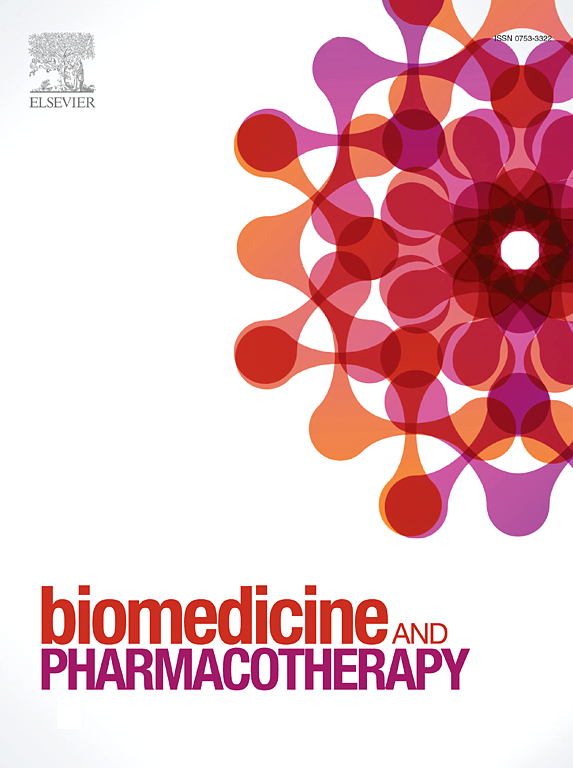Human bone marrow mesenchymal stem cell-derived extracellular vesicles induce inverse dose-dependent anti-fibrotic effects in human myofibroblast cultures and bleomycin-injured mice with pulmonary fibrosis
IF 6.9
2区 医学
Q1 MEDICINE, RESEARCH & EXPERIMENTAL
引用次数: 0
Abstract
Idiopathic pulmonary fibrosis (IPF) is a fatal condition associated with excessive interstitial collagen accumulation and irreversible lung function decline, for which there is no effective cure. Hence, this study evaluated the dose-dependent anti-fibrotic effects of bone marrow mesenchymal stem cell-derived extracellular vesicles (BM-MSC-EVs) in transforming growth factor (TGF)-β1-stimulated human dermal myofibroblasts (1 ×107−1 ×1010 BM-MSC-EVs) and TGF-β1-stimulated lung myofibroblasts isolated from non-IPF versus and IPF patients (1 ×106−1 ×108 BM-MSC-EVs) after 72 h in culture; and when intranasally-administered therapeutically (from days 21–28 post-injury) to bleomycin (BLM)-injured mice (2.5 ×108−2.5 ×1010 BM-MSC-EVs). In each case, changes in myofibroblast differentiation, collagen I deposition, matrix metalloproteinase (MMP)-2, MMP-9, tissue inhibitor of metalloproteinase (TIMP)-1 and TIMP-2 levels, and MMP-2:TIMP-2 and MMP-9:TIMP-1 ratios were assessed. BM-MSC-EVs significantly attenuated human dermal and non-IPF patient-derived lung myofibroblast differentiation and collagen I deposition in an inverse dose-dependent manner after 72 h, with the lowest doses evaluated inducing the strongest inhibitory effects. Similarly, BM-MSC-EVs therapeutically reduced the BLM-induced lung TGF-β1 expression and signal transduction, myofibroblast differentiation and collagen I deposition, and restored the BLM-induced loss of dynamic lung compliance in an inverse dose-dependent manner in vivo, after 7-days of treatment. BM-MSC-EVs promoted the MMP-2:TIMP-2 ratio in human dermal myofibroblasts or the MMP-9:TIMP-1 ratio in human lung myofibroblasts and the murine lung as part of their anti-fibrotic effects. Notably, BM-MSC-EVs failed to exert any anti-fibrotic effects in TGF-β1-stimulated lung myofibroblasts isolated from IPF patients. These findings suggested that BM-MSC-EVs may provide an anti-fibrotic treatment option for early-to-moderate IPF, but may not be effective against advanced IPF.
人骨髓间充质干细胞来源的细胞外囊泡在人肌成纤维细胞培养和博来霉素损伤肺纤维化小鼠中诱导逆剂量依赖的抗纤维化作用
特发性肺纤维化(Idiopathic pulmonary fibrosis, IPF)是一种致命的疾病,与间质胶原积累过多和不可逆的肺功能下降有关,目前尚无有效的治疗方法。因此,本研究评估了骨髓间充质干细胞来源的细胞外囊泡(BM-MSC-EVs)在转化生长因子(TGF)-β1刺激的人真皮肌成纤维细胞(1 ×107−1 ×1010 BM-MSC-EVs)和TGF-β1刺激的肺肌成纤维细胞(1 ×106−1 ×108 BM-MSC-EVs)培养72 小时后的剂量依赖性抗纤维化作用;以及鼻内治疗给博来霉素(BLM)损伤小鼠(2.5 ×108−2.5 ×1010 bm - msc - ev)(损伤后21-28天)。在每种情况下,评估肌成纤维细胞分化、胶原沉积、基质金属蛋白酶(MMP)-2、MMP-9、组织金属蛋白酶抑制剂(TIMP)-1和TIMP-2水平的变化,以及MMP-2:TIMP-2和MMP-9:TIMP-1比率的变化。在72 h后,bm - msc - ev显著减弱人真皮和非ipf患者来源的肺肌成纤维细胞分化和I型胶原沉积,并以负剂量依赖的方式减弱,其中最低剂量的抑制作用最强。同样,在治疗7天后,BM-MSC-EVs治疗性地降低了blm诱导的肺TGF-β1表达和信号转导、肌成纤维细胞分化和I型胶原沉积,并在体内以逆剂量依赖的方式恢复了blm诱导的动态肺顺应性丧失。bm - msc - ev促进人真皮肌成纤维细胞中MMP-2:TIMP-2比率或人肺肌成纤维细胞和小鼠肺中MMP-9:TIMP-1比率,这是其抗纤维化作用的一部分。值得注意的是,bm - msc - ev对来自IPF患者的TGF-β1刺激的肺肌成纤维细胞没有任何抗纤维化作用。这些发现表明,bm - msc - ev可能为早期至中度IPF提供抗纤维化治疗选择,但可能对晚期IPF无效。
本文章由计算机程序翻译,如有差异,请以英文原文为准。
求助全文
约1分钟内获得全文
求助全文
来源期刊
CiteScore
11.90
自引率
2.70%
发文量
1621
审稿时长
48 days
期刊介绍:
Biomedicine & Pharmacotherapy stands as a multidisciplinary journal, presenting a spectrum of original research reports, reviews, and communications in the realms of clinical and basic medicine, as well as pharmacology. The journal spans various fields, including Cancer, Nutriceutics, Neurodegenerative, Cardiac, and Infectious Diseases.

 求助内容:
求助内容: 应助结果提醒方式:
应助结果提醒方式:


